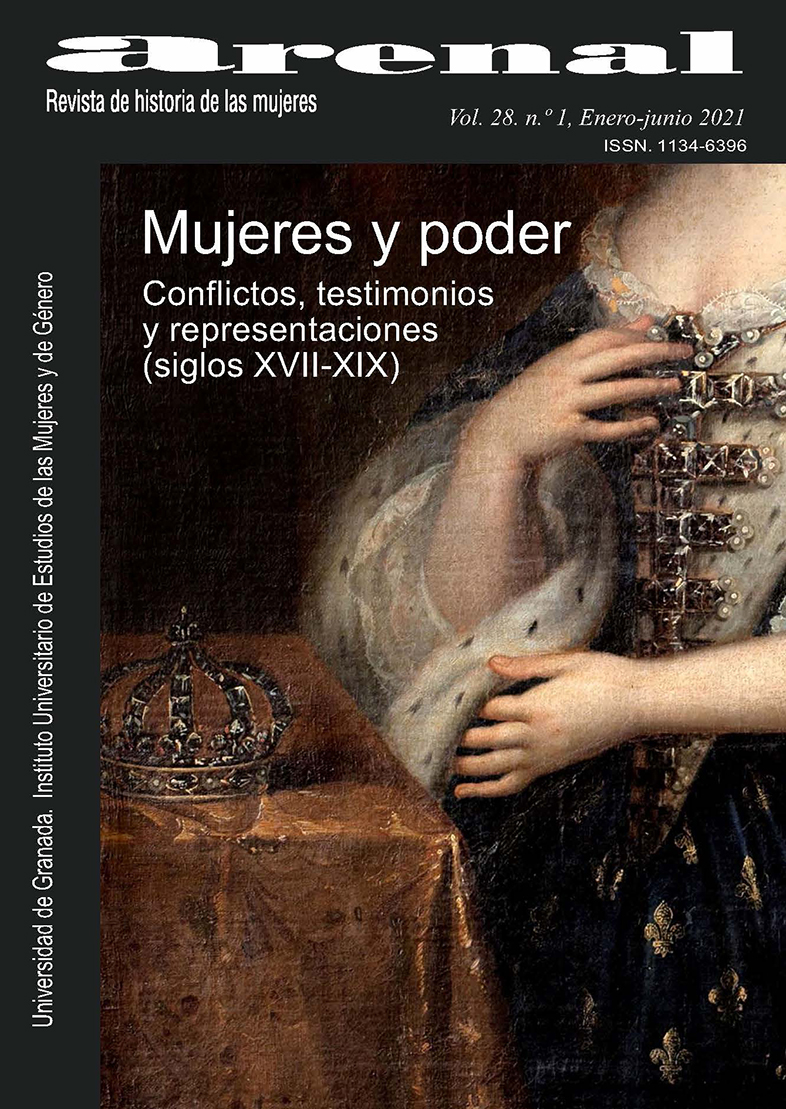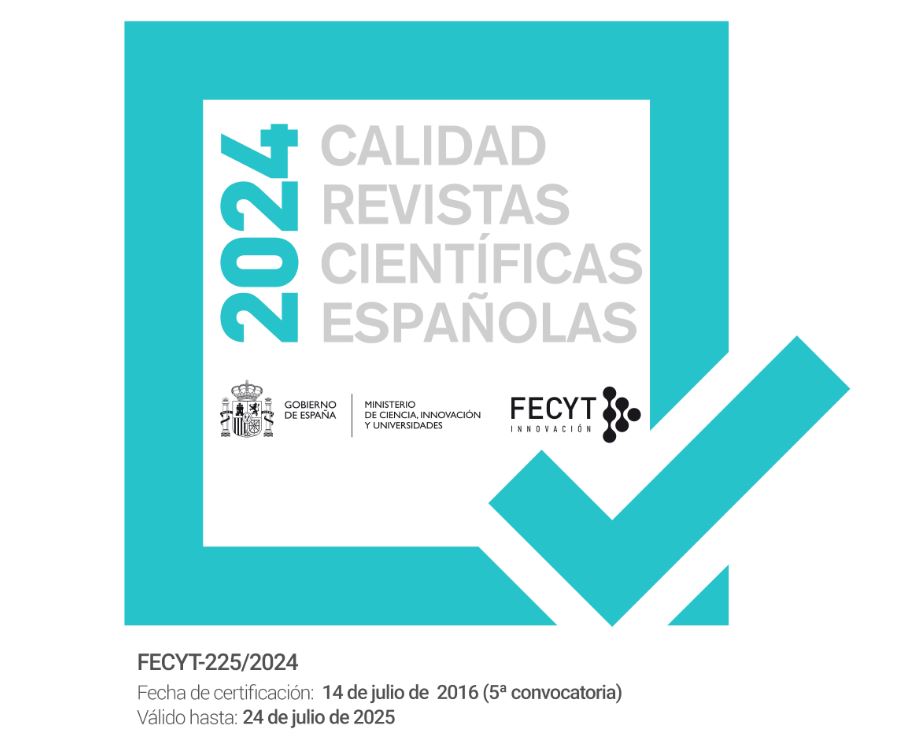The archetypes of women in the origins of cinema and their interrelationship with their images in plastic arts
DOI:
https://doi.org/10.30827/arenal.v28i1.7880Keywords:
Female archetype, Silent cinema, Expressionism, FauvismAbstract
In the beginnings of cinematography (1895-1920) first appears the model of domestic woman against the deviant women and among them the “fatal” woman. With the so-called second-wave feminism, the archetype of the suffragette, associated with the images of the dominant woman, hysterical or embittered. All these types will be reflected simultaneously and with an intermediary relationship with plastic arts. Against this woman who demanded their liberation and independence, a response from the dominant ideology adapted to these disciplines would be quickly revealed, which will bring the feminine iconography of the so-called “natural” woman, a woman in which only her body is highlighted and represented This fiction will give way to an erotic cinema, related to the images of the indolent and dehumanized woman of the painting of Fauvism and Expressionism.
Downloads
References
ALMELA, Margarita (2014): “Reflexiones sobre los estereotipos de maldad y bondad femeninas. Apuntes sobre la historia de una infamia”. En ALMELA, Margarita, GUZMÁN, Helena y GARCÍA LORENZO, M. Magdalena (coords.): Malas. Madrid, UNED, pp. 63-110.
BALLESTEROS, Rosa María (2015): “Raras y olvidadas: Directoras de cine mudo”. Aposta. Revista de Ciencias Sociales, 67, 71-95.
BARROSO VILLAR, Julia (1989): “Iconografía femenina en el arte de vanguardia: la «Neue Sa- chlichkeit» alemana. Cuadernos de arte e iconografía, 4, 247-255.
BORNAY, Erika (1990): Las hijas de Lilith. Madrid, Cátedra.
BORNAY, Erika (2009): “¿Quién teme a la mujer fatal? Génesis y desarrollo del mito en el siglo xix” Conferencia llevada a cabo en el Teatro Real, Madrid.
http://www.mav.org.es/documentos/ensayos%20noviembre2011/Teatro%20Real%20mujer%20fatal. pdf Consultado el 05/10/2017
CANTERO ROSALES, María Ángeles (2011): “El ángel del hogar y la feminidad en la narrativa de Pardo Bazán”. Tonos digital: Revista electrónica de estudios filológicos, 21.
https://www.um.es/tonosdigital/znum21/secciones/estudios-6-%20pardo.htm Consultado el 05/10/2017 CUÉLLAR ALEJANDRO, Carlos (2004): Vocabulario básico del audiovisual. Valencia, Institut Valencià de Cinematografía, IVAC.
GARCÍA CONESA, María Isabel, JUAN RUBIO, Antonio Daniel (2013): “La mujer estadounidense y el ocio en los años veinte”. Feminismo/s, 21, pp. 157-181.
GÓMEZ TRUEBA, Teresa (2002): “Imágenes de la mujer en la España de finales del xix: “santa, bruja o infeliz ser abandonado”. Ciberletras, 6. http://www.lehman.cuny.edu/ciberletras/v06/ gomeztrueba.html
LITVAK, Lily (1979): Erotismo fin de siglo. Barcelona, Antoni Bosch editor. MAYAYO, Patricia (2010): Historias de mujeres, historias del arte. Madrid, Cátedra.
MIRBEAU, Octave (1921): “Aristide Maillol”. París, Aux Armes de France. Société des Dilettantes. https://gallica.bnf.fr/ark:/12148/bpt6k9688963k.textelmage
MORNAT, Isabelle (2016): “La gesta de las terribles sufragistas en España”. HAL (hal-01346431). https://hal.archives-ouvertes.fr/hal-01346431 Consultado el 05/10/2017.
NARVÁEZ TORREGROSA, Daniel (2008): “La visión cinematográfica de D. W. Griffith”. Frame: Revista de cine de la Biblioteca de la Facultad de Comunicación de la Universidad de Sevilla, 3, 44-57.
TORELLO, Georgina (2006): “Con el demonio en el cuerpo: la mujer en el cine mudo italiano (1913-1920)”. Secuencias: Revista de historia de cine, 23, 7-19.
TORRENT, Rosalía (1996): “Mujeres e imágenes de mujeres en la vanguardia histórica”. Asparkia, 6, 147-162.
TORRES MONREAL, Francisco (1994): “Charles Beaudelaire. Escritos íntimos”. https://www.um.es/docencia/ftorres/curriculum/trabajos/Beaudelaire-1.html
VALCÁRCEL, Amelia (1994): Sexo y filosofía. Sobre “mujer” y “poder”. Barcelona, Anthropos. VALCÁRCEL, Amelia (2015). “Misoginia romántica. Hegel, Schopenhauer, Kierkegaard, Nietzsche”. https://valcarcelamelia.files.wordpress.com/2015/07/misoginia-romantica.pdf
Downloads
Published
How to Cite
Issue
Section
License
Los/as autores/as que publican en esta revista están de acuerdo con los siguientes términos:
Los autores/as conservarán sus derechos de autor y garantizarán a la revista el derecho de primera publicación de su obra, el cuál estará simultáneamente sujeto a la Licencia de reconocimiento de Creative Commons 4.0 BY-NC-ND que permite a terceros compartir la obra siempre que se indique su autor y su primera publicación esta revista.
Los autores/as podrán adoptar otros acuerdos de licencia no exclusiva de distribución de la versión de la obra publicada (p. ej.: depositarla en un archivo telemático institucional o publicarla en un volumen monográfico) siempre que se indique la publicación inicial en esta revista.
Se permite y recomienda a los autores/as difundir su obra a través de Internet (p. ej.: en archivos telemáticos institucionales o en su página web) antes y durante el proceso de envío, lo cual puede producir intercambios interesantes y aumentar las citas de la obra publicada. (Véase El efecto del acceso abierto).














